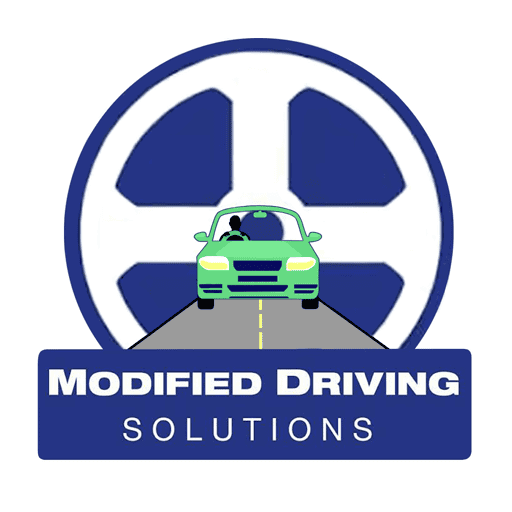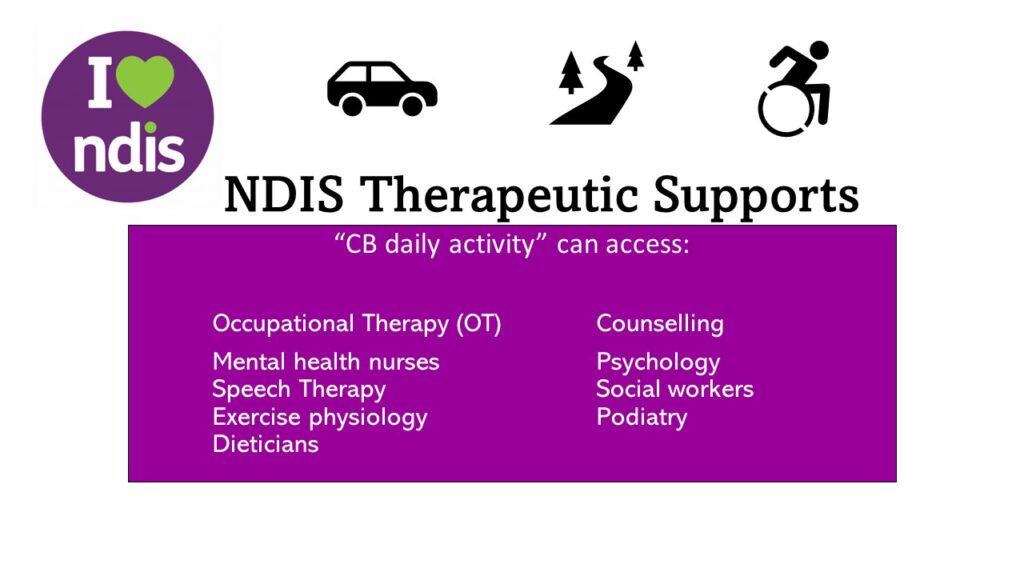Driving Goals: Unlocking Independence with NDIS Support
The ability to drive increases a person’s independence, community integration and enhances their options to engage in meaningful tasks. This includes enhancing opportunities for social, recreational, employment and education activities. Since the introduction of the NDIS (National Disability Insurance Scheme) across Australia in 2016, it has given people with medical conditions and disabilities greater opportunity to obtain their driver’s licence. This is an important activity that they may not have attempted to otherwise engage in. Driving increases a person’s independence and allows more options for travel, work and recreational tasks. This article will explain how NDIS funding may be used to learn to drive, as well as how NDIS participants can be supported throughout the process of obtaining their licence.

Who will the NDIS support for driving?
The purpose of the NDIS is to help people achieve their goals in areas that are affected by their medical diagnosis or disability. Driving is one such example, and NDIS funding under the category of ‘Therapeutic supports’ or ‘Capacity building supports’ may be utilised to fund necessary assessments and specialised driving lessons. When an NDIS participant has a goal to learn to drive, the first step is to identify this goal to their NDIS local area coordinator (also called LAC). The aim is tosecure funding for the required NDIS driving assessment.
Your First Steps: Learner’s Licence and Medical Fitness for Driving
As with any aspiring driver, gaining their Learner driver’s licence is the first step to learning to drive. Once the participant has their Learner’s, they can then contact a Driver Trained Occupational Therapist (OT) and organize the driving assessment. Depending on the person’s disability, it may also be beneficial to speak to their GP or treating doctor about how their medical condition may affect driving. It is important to note that a doctor does have the authority to declare that someone is not fit to drive due to medical reasons, so it is crucial to discuss any concerns in a transparent manner with your trusted doctor.
Understanding the Occupational Therapy Driving Assessment Process
Unless the NDIS participant’s medical condition is severe and driving is not a realistic possibility (for example in severe cases of intellectual or physical disability), they will be suitable to undertake an OT driving assessment. In NSW, this is the processed where the potential impact of a person’s medical condition on their driving is thoroughly assessed. Once the participant has confirmed NDIS funding for the assessment, they can reach out to a qualified OT service to organise an appointment.
The assessment is usually done at the person’s home and their family and friends are welcome to attend. The assessment consists three screening assessments, followed by a 1-hour drive with a specialized rehabilitation driving instructor. The whole assessment takes 2 hours on the day. The assessment involves rehabilitation driving instructors who have completed specific qualifications to work with people with various medical conditions. They also have extensive experience working with NDIS participants and people with disabilities. This additional expertise enables them to be well-suited to support the participant with learning to drive.
The aim of the Occupational Therapy driving assessment for learner drivers is to determine the following:
- Identify any deficits that may affect driving in the following areas: vision, cognition and physical ability. As the person is under the NDIS and thus has a diagnosed medical issue, it is expected that a shortfall may be observed in at least one area.
- Establish the person’s current or baseline level of driving skill.
- To determine if any modifications to the vehicle are necessary to ensure the person can drive safely. This applies for NDIS participants with physical disabilities.
- To develop an individualized lesson plan for specialized driving lessons with a rehabilitation driving instructor.
The Driver Trained OT is primarily appraising how the person’s medical condition may be affecting driving, as this is also the concern of the NDIS. If the OT assesses that the person’s ability to drive is not affected by their medical condition, a recommendation for NDIS-funded driving lessons may not be made.
Once the assessment is complete, the Occupational Therapist will write a report that is sent to the RMS (Roads and Maritime Services) and NDIS. The purpose of this is to notify the RMS that the person has completed an Occupational Therapy driving assessment due to a medical condition that could possibly impact on driving. Declaring all medical conditions that potentially affect driving is required by law and is the responsibility of the individual. It is important to note that a medical diagnosis does not mean the person cannot drive, however the RMS must be made aware of the condition. Moving forward, depending on the NDIS participant’s medical condition, they may require regular (usually yearly) medical assessments to monitor their condition in relation to driving. This is particularly applicable when progresses from being a learner driver to their provisional licence (and beyond).
Tailored Driving Lessons for NDIS Learners
As previously mentioned, the OT driving assessment report will be forwarded to both the RMS and NDIS. In most cases for learner drivers with NDIS funding, the Occupational Therapist will recommend that the participant undertakes a number of lessons with a rehabilitation driving instructor. These lessons can be funded by the NDIS and will identify specific goals for the participant to achieve. Generally, driving lessons are graded into three categories of mild, moderate and complex traffic. For example, the lesson plan might state that within 15 lessons, the participant is expected to be able to drive independently (without physical assistance from the driving instructor) in single lane 50km/hour roads.
The OT monitors the participant’s progress during the lessons via regular feedback from the driving instructor. After the person has completed the recommended number of driving lessons, the OT will re-assess the person and determine if they have achieved the identified goals. Depending on the person’s progress and if they are almost ready to undergo the Provisional driving test, the OT may recommend further driving lessons with new goals (e.g. moving from mild to moderate traffic conditions). Ongoing monitoring and assessment by the OT ensures that the person continues to progress with their driving skills, so that they are always improving and working towards their Provisional licence. Regular monitoring also allows the OT to identify areas where the person is struggling and showing little progress, so changes to the lesson plan can be made to better support the participant. Moreover, if the person has stopped progressing with their driving (e.g. if they are unable to advance from moderate traffic to complex traffic), the OT can make a judgement about whether continuing with lessons will beneficial, or if the person’s disability is preventing them from obtaining their licence. In these isntances, the NDIS may stop funding driving lessons.
NDIS Vehicle Modifications: Tailored Adaptations for Safe and Independent Driving
For participants with physical conditions or disabilities, vehicle modifications may be necessary for them to drive safely and to RMS standards. In many cases, the cost of vehicle modifications can be covered under the NDIS. Part of the role of the OT driving assessment is to prescribe appropriate vehicle modifications for the person, such as a spinner knob, hand control or left foot accelerator. The necessary modifications will depend on the person’s medical condition and physical ability. Once the proper modifications have been prescribed for the person, they will undergo driving lessons (also able to be funded under NDIS) to learn how to drive with the modifications. This generally applies to both existing drivers and new (learner) drivers. Once the person can drive safely in all traffic conditions with the modifications, they will complete the RMS disability driving test, where the modifications will be endorsed on their licence. This means they legally have to always drive with their endorsed modifications. It is also important to note that while the NDIS may cover costs of modifications and driving lessons, NDIS funding does not pay for the costs of purchasing a vehicle.



